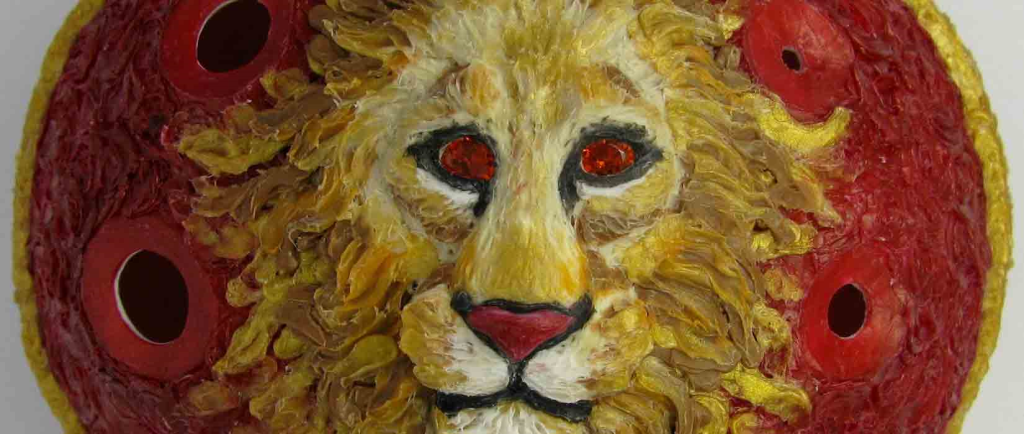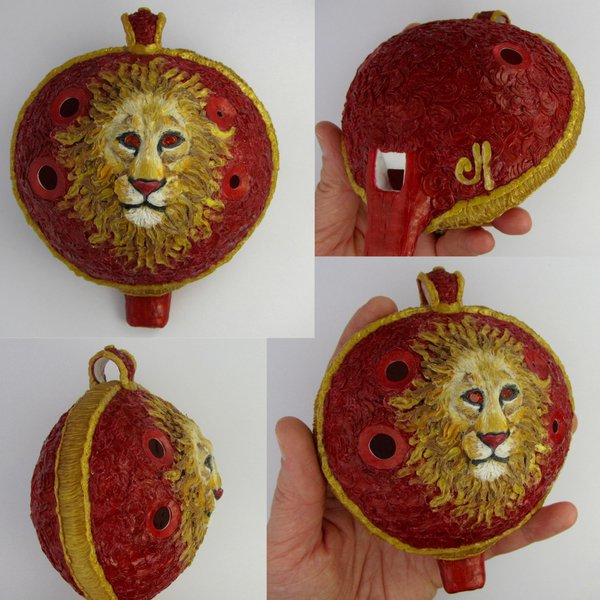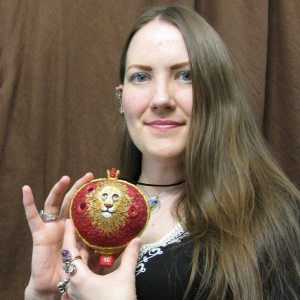 The 2015 3Doodler Awards have been announced, and one of the runners-up, in the Mixed Media category, Carrie Michael, is sharing with us here how she created the winning Ocarina Lion. Michael’s design combines the ocarina, an ancient wind musical flute instrument, that is over 12,000 years old, and adds a popular culture twist by including a Game of Thrones-inspired lion head, representing House Lannister. The result is a colorful pendant that can also be played as a musical instrument–all hand-crafted by Michael and explained in detail here.
The 2015 3Doodler Awards have been announced, and one of the runners-up, in the Mixed Media category, Carrie Michael, is sharing with us here how she created the winning Ocarina Lion. Michael’s design combines the ocarina, an ancient wind musical flute instrument, that is over 12,000 years old, and adds a popular culture twist by including a Game of Thrones-inspired lion head, representing House Lannister. The result is a colorful pendant that can also be played as a musical instrument–all hand-crafted by Michael and explained in detail here.
In Step 1, you need to pick an object that you will doodle over so you can make the front of the pendant. If an ocarina has a small interior it will have a higher pitch, so you can choose how large or small your want the interior of your ocarina to be, controlling the pitch. A curved dome shape proves ideal for pitch, and so, if you can, choose a small or medium metal gravy ladle as your object here. Then you cover the form with painter’s tape, which the doodled plastic sticks to, and mark where the holes will be, darkening them with a marker. Holes should be far away from the voicing.
Next, you make the ocarina’s skeleton with ABS plastic strands using the largest nozzle in your 3Doodler set. Michael describes how to make the holes:
“Make sure that each layer of plastic touches completely and leaves no holes for air to escape. Add extra plastic around the sound holes and use the edges of the nozzle to smooth around them to make a comfortable place for fingers to touch. Making the holes too small is better than too large at this point, because they can always be carved larger when tuning.”
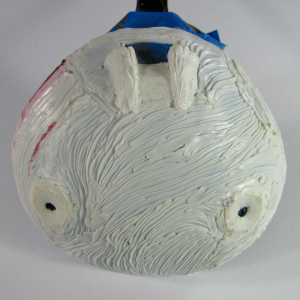 For thickness, you will doodle another layer over the first layer using any color combination. This is your first visible layer, so you want it to be nice and smooth without sharp edges (especially around sound holes). When you are pleased, carefully remove the first doodle from the form (gravy ladle or whatever).
For thickness, you will doodle another layer over the first layer using any color combination. This is your first visible layer, so you want it to be nice and smooth without sharp edges (especially around sound holes). When you are pleased, carefully remove the first doodle from the form (gravy ladle or whatever).
In Step 2, you make the pendant clasp by taping over a round form. Michael used a jump ring mandrel, or you can use a pen or other round form. Draw your clasp shape and doodle over it, setting it aside for later. Steps 3 and 4 provide detailed directions for the airway stick and mouthpiece, and then in Step 5 you find yourself doodling the back of the ocarina. Add a tape layer to the same form you used for the front; if you are making a 6-hole ocarina, you draw 2 holes (a 4-hole ocarina doesn’t need extra holes).
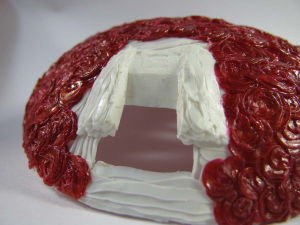 Step 5A is the most difficult part of the entire project: voicing. This involves placing the sound hole exactly where you need it to whistle properly. You can read all about how to do this in Michael’s detailed instructions. In Step 6 you are putting all of the parts of the puzzle together, adding plastic, and cleaning up edges. Once all of this is accomplished, you can have fun by adding embellishments like design details and stones.
Step 5A is the most difficult part of the entire project: voicing. This involves placing the sound hole exactly where you need it to whistle properly. You can read all about how to do this in Michael’s detailed instructions. In Step 6 you are putting all of the parts of the puzzle together, adding plastic, and cleaning up edges. Once all of this is accomplished, you can have fun by adding embellishments like design details and stones.
Last but not least, since this is a musical instrument, it needs to be tuned. You can do this by following Michael’s detailed instructions in Step 8, which refer you back to Step 5A’s focus on Voicing.
After all of those steps, you won’t be sorry. The next thing you know you are skipping merrily through a field playing your 3Doodled Lion Pendant Ocarina without a care in the world!
You can also skip these steps and go right to Michael’s Etsy shop, where she sells this and other (including custom!) ocarinas, pendants, and more — this design goes for $250. Tell us your thoughts on this design in the 3Doodled Lion Pendant Ocarina forum over at 3DPB.com.
Subscribe to Our Email Newsletter
Stay up-to-date on all the latest news from the 3D printing industry and receive information and offers from third party vendors.
You May Also Like
Gorilla Sports GE’s First 3D Printed Titanium Cast
How do you help a gorilla with a broken arm? Sounds like the start of a bad joke a zookeeper might tell, but it’s an actual dilemma recently faced by...
Nylon 3D Printed Parts Made More Functional with Coatings & Colors
Parts 3D printed from polyamide (PA, Nylon) 12 using powder bed fusion (PBF) are a mainstay in the additive manufacturing (AM) industry. While post-finishing processes have improved the porosity of...
$25M to Back Sintavia’s Largest Expansion of Metal 3D Printing Capacity Since 2019
Sintavia, the digital manufacturing company specializing in mission-critical parts for strategic sectors, announced a $25 million investment to increase its production capacity, the largest expansion to its operations since 2019....
Velo3D Initiates Public Offering in a Bid to Strengthen Financial Foundations and Drive Future Growth
Velo3D (NYSE: VLD) has been among a number of publicly traded 3D printing firms that have attempted to weather the current macroeconomic climate. After posting a challenging financial report for 2023,...


